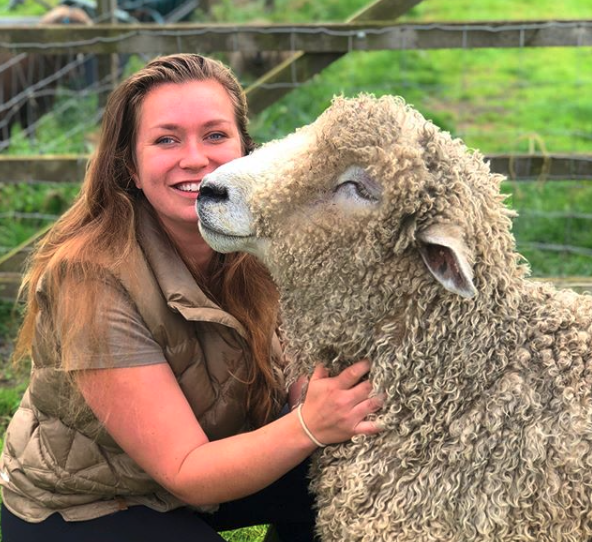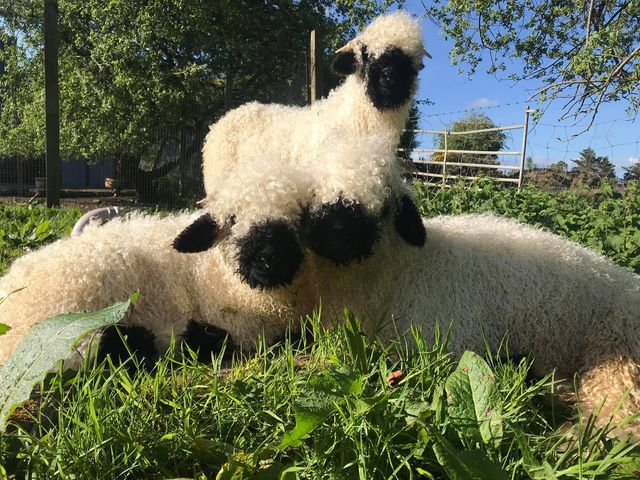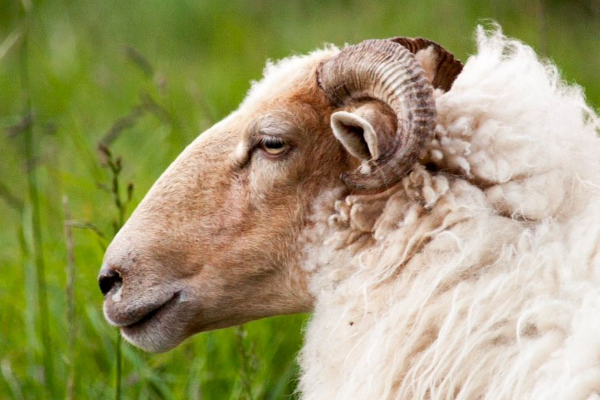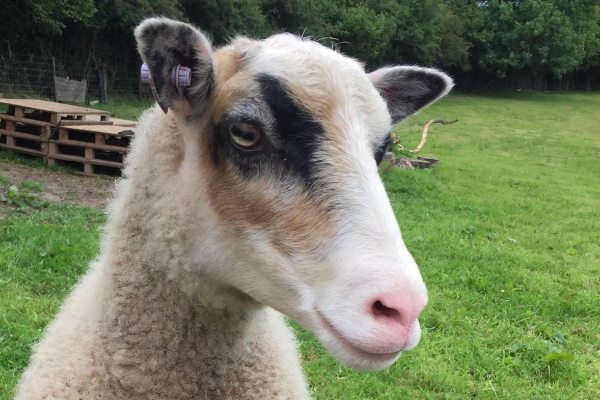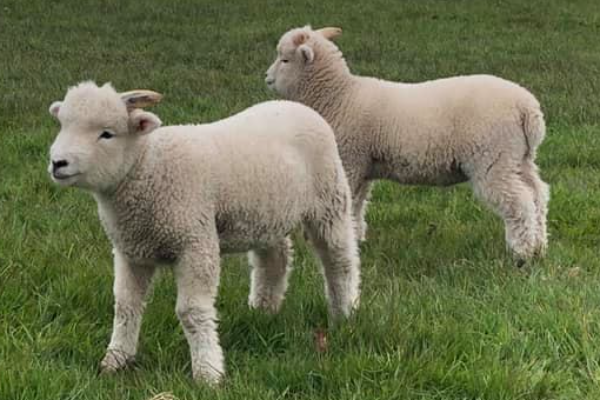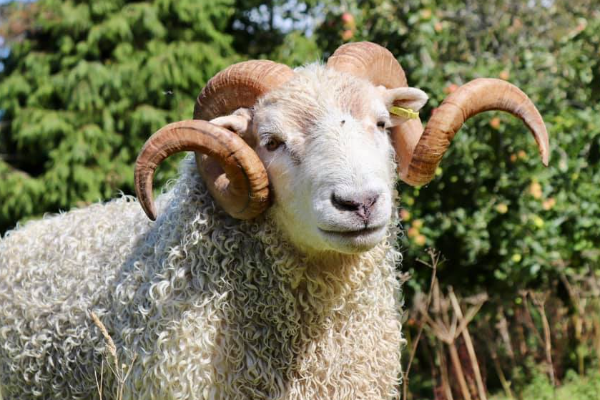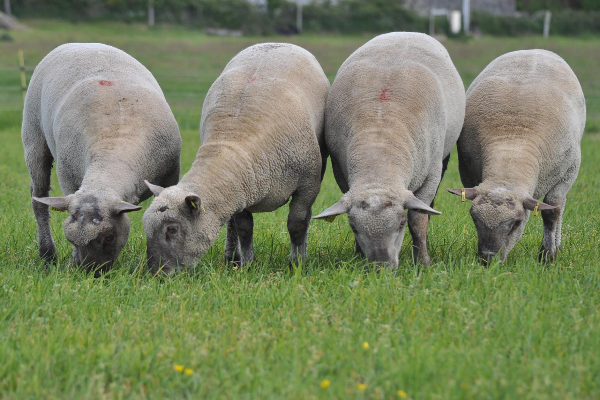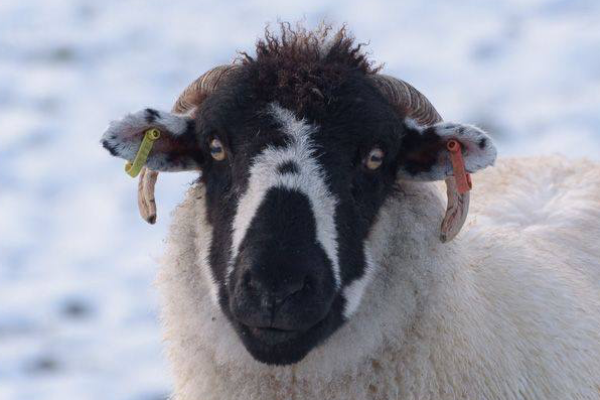Bluefaced Leicester Sheep
What is the history of Bluefaced Leicester Sheep?
The Bluefaced Leicester evolved from a breeding scheme, to develop the Longwool sheep in the 1700's, by Robert Bakewell. Originally known as the Dishly Leicester. Today it is known as the Bluefaced Leicester and is now the most popular crossing sire throughout the British isles.
The breed was developed over the next 200 years and became commonly known as the Hexham Leicester due to it's early concentration in the North of England.
Evolved from the beginnings of breed improvement in the 17th century when wool production was the main aim. The Bluefaced Leicester provides a crucial link in the stratified sheep industry of England as it is crossed with mountain breeds to produce the Mule.
Sheep are large and fast growing with the ewes being highly prolific and good milk producers. The Mules are then crossed with terminal sires to produce good quality lambs.
In the 1970s, the Bluefaced Leicester was exported to Canada. Exported frozen semen from the United Kingdom is now used to expand the genetic diversity in Canada and the United States.
This breed is raised primarily for meat, but their fleece is becoming increasingly popular for handspinning.
What are the characteristics of Bluefaced Leicester Sheep?

- Bluefaced Leicester Sheep have a reputation for being high maintenance!
- They eat a lot and it can be hard to keep them fit if it’s a bad winter - some will be inside all winter.
- Bluefaced Leicester Sheep are large and fast growing with the ewes being highly prolific and good milk producers.
- The Mules are then crossed with terminal sires to produce good quality lambs.They are popular with Mule breeders though and that’s their niche. They’re basically crossed with a hill ewe to create the Mule.
- Some farmers do breed them pure - these types are still very blue in the face whereas crossing Leicesters tend to be brown in the face.
- Bluefaced Leicester sheep should have a broad muzzle, good mouth and a tendency towards a roman nose, bright alert eyes and long erect ears.
- The colour of the head skin should be dark blue showing through white hair; although a little brown is acceptable. There should be a good length of neck laid into broad shoulders with a good spring of rib and a long strong back with no weakness behind the shoulder.
- The hindquarters should be broad and deep, the legs well positioned and strong boned. It is important that the wool be tightly purled, fine and open cleanly to the skin.
- They have curly threadlike wool which makes it considerably lighter than others. Some fleeces only weigh 1 to 3 kg. These particular kind of sheep have no wool on the head or neck. It is important that the wool be tightly purled, fine and open cleanly to the skin.
- The wool is fine and dense with a good lustre and is long, therefore, it is well suited to combing. 26 Micron and an average length of 85-90mm.
What is the weight of mature Bluefaced Leicester Sheep?
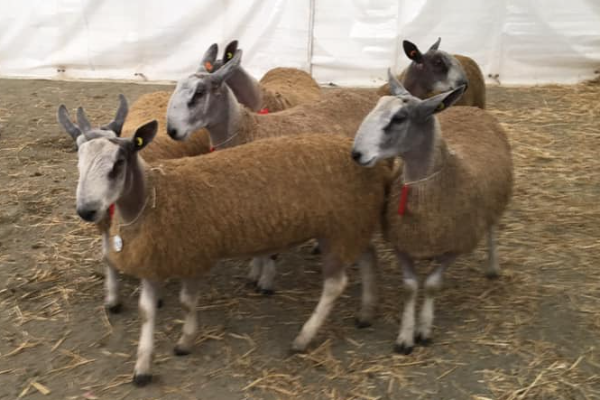
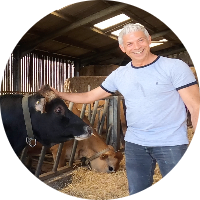
Written by
H Cetin KATIRCI
Online ShepherdBreedsMore
IllnessesMore
Forage cropsMore
![]() Патологическая физиология голодания Arina TARAN
Патологическая физиология голодания Arina TARAN![]() Дефицит фосфора (гипофосфатемия) Hipofosfatemi Arina TARAN
Дефицит фосфора (гипофосфатемия) Hipofosfatemi Arina TARAN![]() Какие бывают кормораздатчики для ферм КРС? Irina Makarova
Какие бывают кормораздатчики для ферм КРС? Irina Makarova![]() Кормушки для овец Diana Myakisheva
Кормушки для овец Diana Myakisheva![]() Питание домашних коз: что едят, виды корма и правила кормления Alina Arslantürk
Питание домашних коз: что едят, виды корма и правила кормления Alina Arslantürk![]() Важность минералов питании сельскохозяйственных животных Irina Makarova
Важность минералов питании сельскохозяйственных животных Irina Makarova


